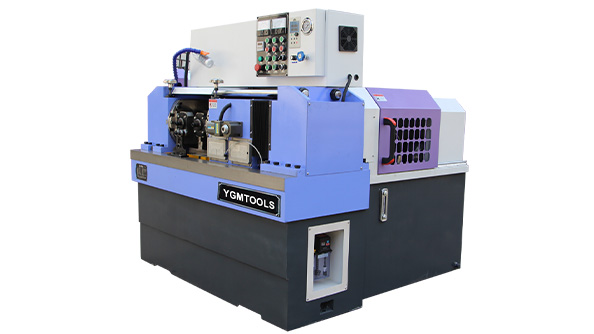
-
 Afrikaans
Afrikaans -
 Albanian
Albanian -
 Amharic
Amharic -
 Arabic
Arabic -
 Armenian
Armenian -
 Azerbaijani
Azerbaijani -
 Basque
Basque -
 Belarusian
Belarusian -
 Bengali
Bengali -
 Bosnian
Bosnian -
 Bulgarian
Bulgarian -
 Catalan
Catalan -
 Cebuano
Cebuano -
 Corsican
Corsican -
 Croatian
Croatian -
 Czech
Czech -
 Danish
Danish -
 Dutch
Dutch -
 English
English -
 Esperanto
Esperanto -
 Estonian
Estonian -
 Finnish
Finnish -
 French
French -
 Frisian
Frisian -
 Galician
Galician -
 Georgian
Georgian -
 German
German -
 Greek
Greek -
 Gujarati
Gujarati -
 Haitian Creole
Haitian Creole -
 hausa
hausa -
 hawaiian
hawaiian -
 Hebrew
Hebrew -
 Hindi
Hindi -
 Miao
Miao -
 Hungarian
Hungarian -
 Icelandic
Icelandic -
 igbo
igbo -
 Indonesian
Indonesian -
 irish
irish -
 Italian
Italian -
 Japanese
Japanese -
 Javanese
Javanese -
 Kannada
Kannada -
 kazakh
kazakh -
 Khmer
Khmer -
 Rwandese
Rwandese -
 Korean
Korean -
 Kurdish
Kurdish -
 Kyrgyz
Kyrgyz -
 Lao
Lao -
 Latin
Latin -
 Latvian
Latvian -
 Lithuanian
Lithuanian -
 Luxembourgish
Luxembourgish -
 Macedonian
Macedonian -
 Malgashi
Malgashi -
 Malay
Malay -
 Malayalam
Malayalam -
 Maltese
Maltese -
 Maori
Maori -
 Marathi
Marathi -
 Mongolian
Mongolian -
 Myanmar
Myanmar -
 Nepali
Nepali -
 Norwegian
Norwegian -
 Norwegian
Norwegian -
 Occitan
Occitan -
 Pashto
Pashto -
 Persian
Persian -
 Polish
Polish -
 Portuguese
Portuguese -
 Punjabi
Punjabi -
 Romanian
Romanian -
 Russian
Russian -
 Samoan
Samoan -
 Scottish Gaelic
Scottish Gaelic -
 Serbian
Serbian -
 Sesotho
Sesotho -
 Shona
Shona -
 Sindhi
Sindhi -
 Sinhala
Sinhala -
 Slovak
Slovak -
 Slovenian
Slovenian -
 Somali
Somali -
 Spanish
Spanish -
 Sundanese
Sundanese -
 Swahili
Swahili -
 Swedish
Swedish -
 Tagalog
Tagalog -
 Tajik
Tajik -
 Tamil
Tamil -
 Tatar
Tatar -
 Telugu
Telugu -
 Thai
Thai -
 Turkish
Turkish -
 Turkmen
Turkmen -
 Ukrainian
Ukrainian -
 Urdu
Urdu -
 Uighur
Uighur -
 Uzbek
Uzbek -
 Vietnamese
Vietnamese -
 Welsh
Welsh -
 Bantu
Bantu -
 Yiddish
Yiddish -
 Yoruba
Yoruba -
 Zulu
Zulu
types of thread rolling
Types of Thread Rolling An Overview
Thread rolling is a manufacturing process commonly used in the production of screws, bolts, and various fasteners. It is a cold forming process that involves deforming a cylindrical blank of metal to create helical threads. This technique is favored for its ability to produce precise, high-strength threads without cutting away material, thereby maintaining a higher density and integrity of the metal. There are several key types of thread rolling processes, each with its unique characteristics and applications.
1. Flat Die Thread Rolling
Flat die thread rolling is one of the most common methods of thread forming. In this process, two flat, parallel dies are used to shape the thread onto the workpiece. The metal blank is placed between the dies and is rolled in a circular motion. As the dies move against the blank, they impart the desired thread profile. This method is particularly effective for producing external threads on larger diameter parts and is often used in the automotive and aerospace industries. Its strength lies in the ability to create complex threads with high precision.
In circular thread rolling, the metal blank is positioned between two rotating cylindrical dies, which create threads by rolling the blank against the die surfaces. This process allows for continuous production and is ideal for high-volume manufacturing. Circular thread rolling is particularly well-suited for producing external threads on smaller components such as screws and bolts. Its efficiency and speed make it a popular choice in industries that require large quantities of threaded products.
types of thread rolling

3. Planetary Thread Rolling
Planetary thread rolling is a more versatile and advanced type of thread rolling process. It involves the use of multiple dies that move in a planetary motion around a stationary workpiece. This method allows for the simultaneous formation of threads on multiple workpieces, significantly increasing production efficiency. Planetary thread rolling can produce a range of thread profiles and is especially useful for small, intricate components often used in electronics and medical devices. Its ability to handle complex designs with precision adds to its appeal in specialized applications.
4. Roll Threading
Roll threading is a process similar to thread rolling that also utilizes cylindrical dies, but it specifically focuses on the production of fine threads on long shafts or rods. This technique significantly enhances the mechanical properties of the threads, as it becomes a part of the same continuous material without any cutting involved. Roll threading is particularly advantageous for applications where thread strength is critical, such as in high-stress environments like oil and gas pipelines.
Conclusion
The various types of thread rolling techniques offer manufacturers the flexibility to choose the best process according to their specific needs. Whether through flat die, circular, planetary, or roll threading, thread rolling provides a highly efficient means of creating strong, precise threads with minimal material waste. As industries continue to evolve and demand for high-quality fasteners grows, thread rolling remains an essential technique in modern manufacturing, paving the way for innovations in design and productivity. Each type of thread rolling carries its own set of advantages, making it crucial for engineers and manufacturers to select the appropriate method based on their production requirements and the characteristics of the end product.
